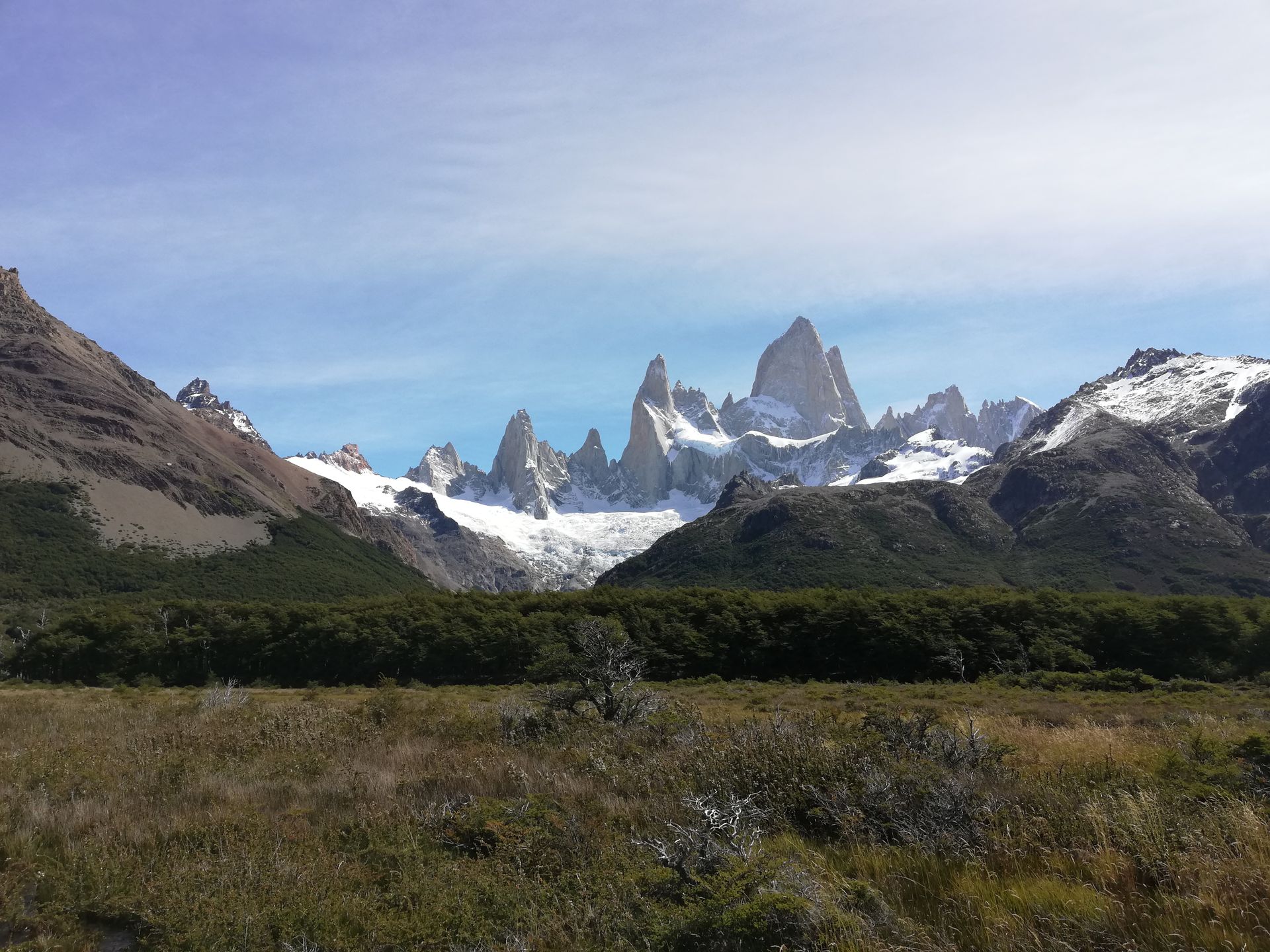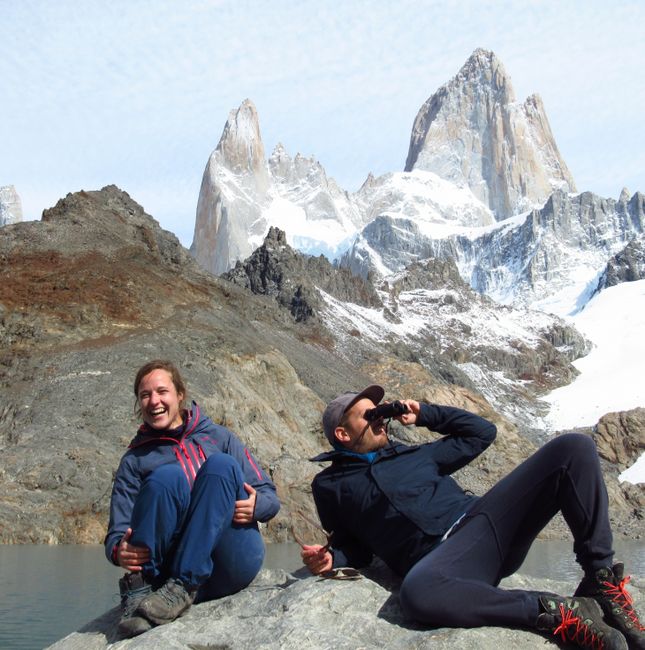S: Bonzenkreuzfahrt rund um die Fjorde Feuerlands
Veröffentlicht: 15.02.2020
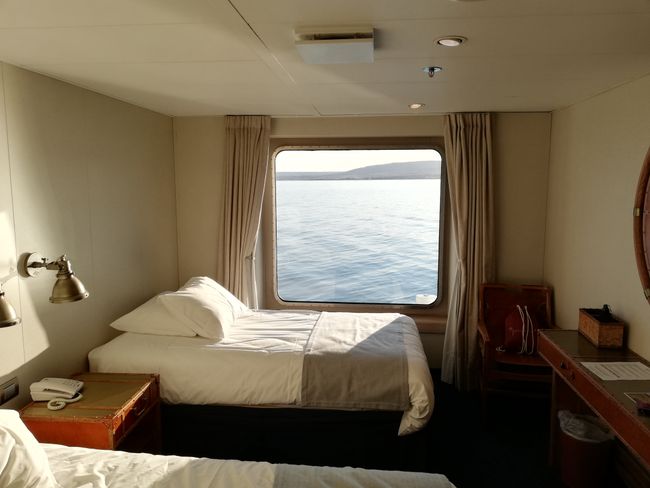
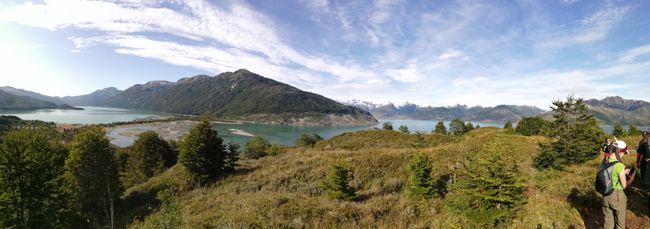
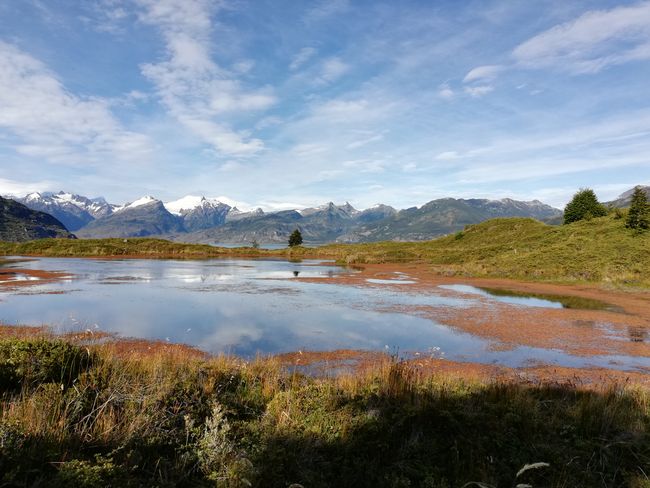
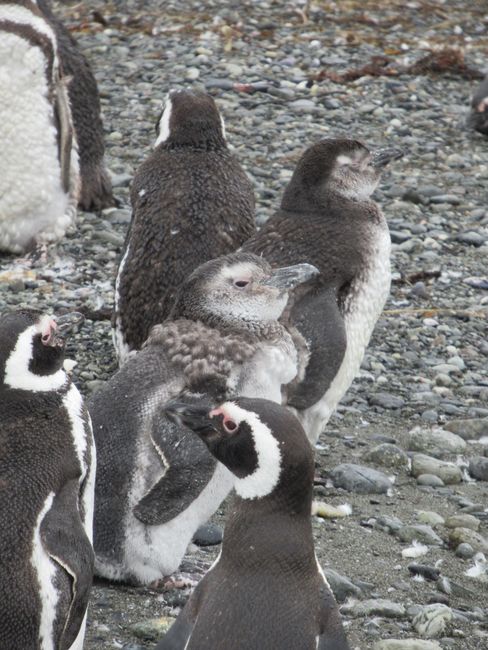
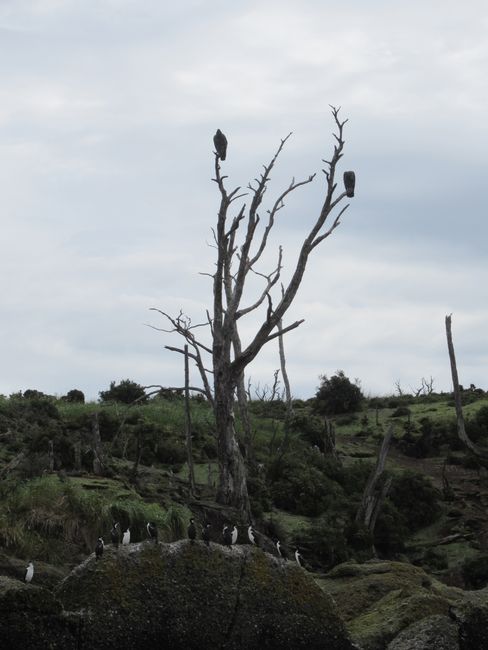
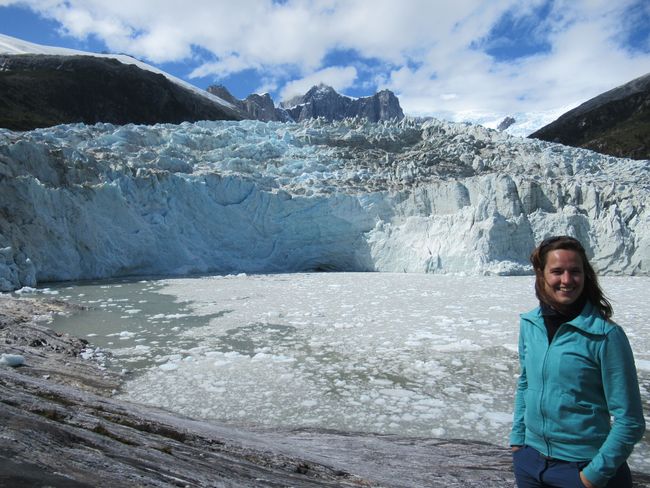
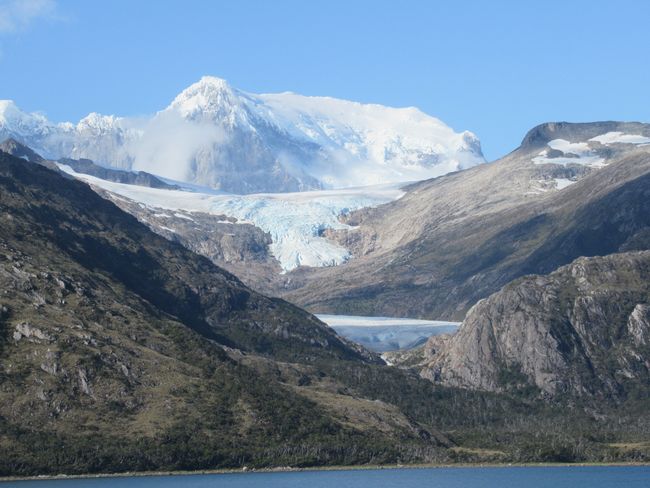
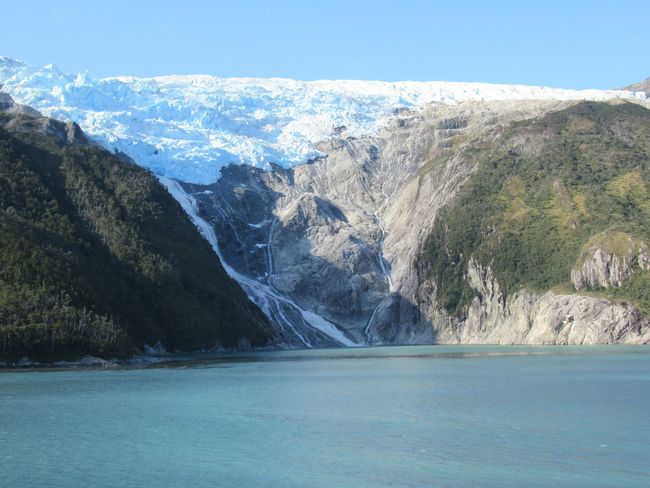
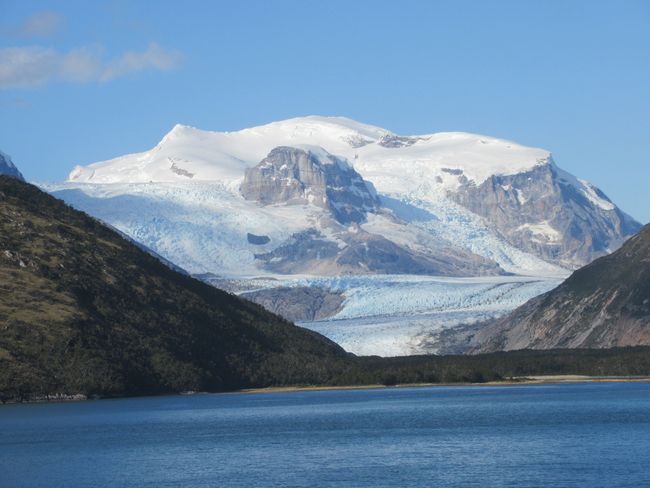
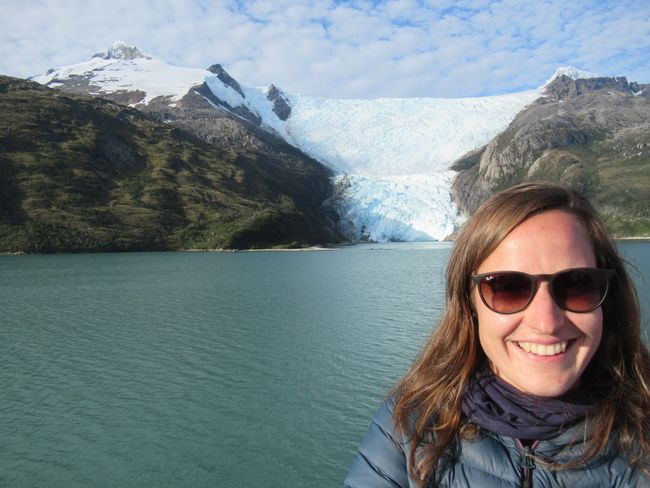
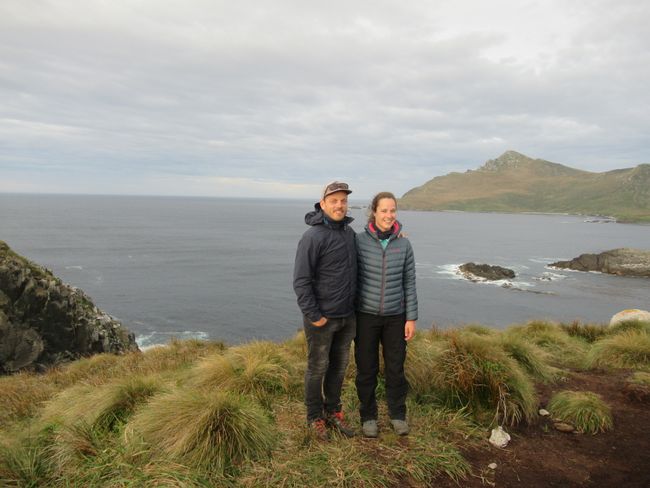
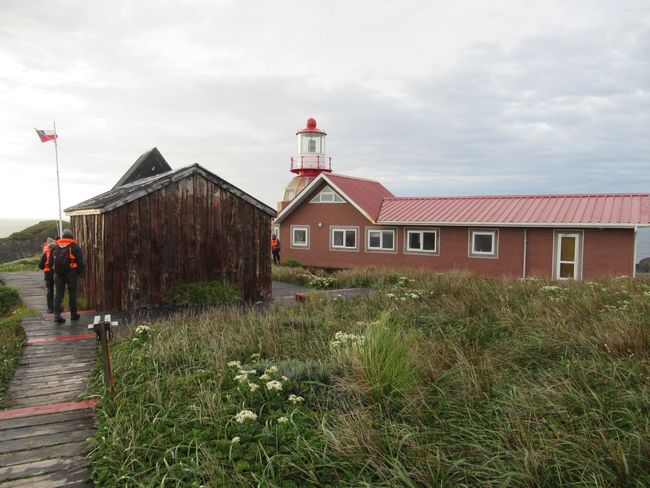
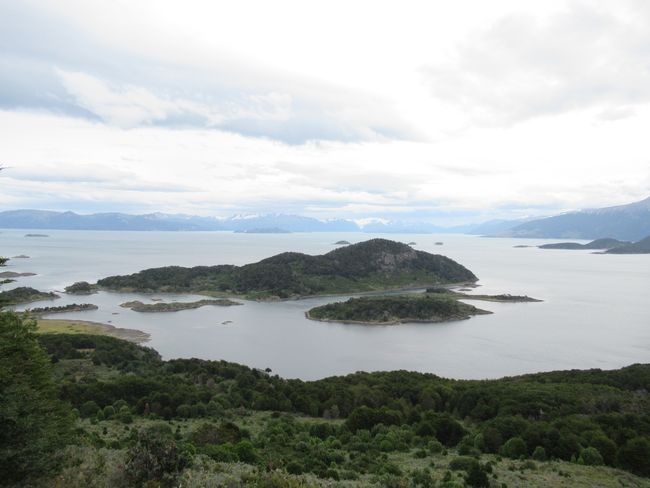
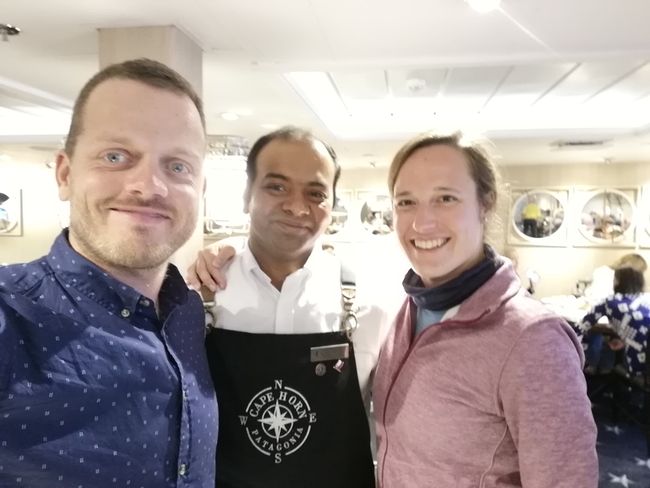
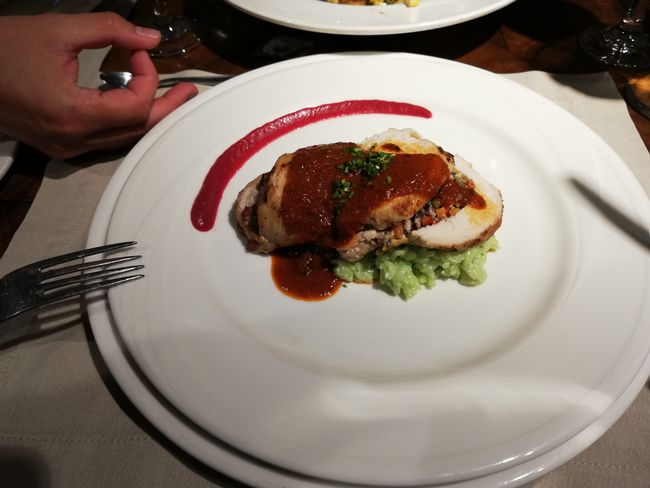
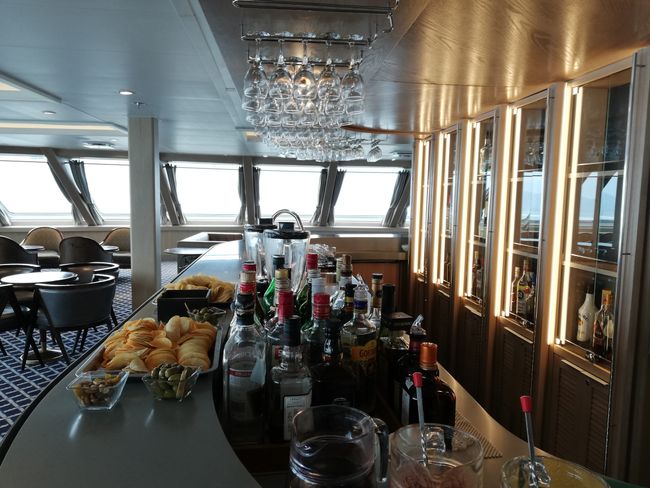
Newsletter abonnieren
Meine Fans monieren angeblich, ich schreibe zu wenig... Nun ich moniere, nur wenige lesen unsere Posts! Falls dieser Post nicht von mindestens 10 Personen "geliked" wird, gibt es meinen nächsten Beitrag erst wieder aus Neuseeland, womit ich Euch schon einmal unser nächstes Fernziel mitgeteilt habe. :-)
Wie soll ich es sagen, aber ich hatte in Puerto Natales nach dem Trek im Nationalpark Torres del Paine bereits die Schnauze voll von Bergen und Gletschern, sodass Fabienne und ich sogar kurz davor standen, unsere Wege für eine kurze Zeit zu trennen. Ich sehne mich nach Strand und Sonne, Abwechslung. Fabienne kann nicht genug von Gletschern und Berge haben und in den nächsten Tagen reisen wir wieder nördlich, östlich der Anden entlang zu weiteren Gletschern und Bergen. Also dachte ich mir, warum nicht schnell nach Buenos Aires fliegen um eine Woche kiten zu gehen. Aber es ist anders rausgekommen, ganz anders.
Wir hatten da von diesem Kreuzfahrtschiff gehört - Cruceros Australis. Das Schiff fährt zwischen Punta Arenas (Chile) und Ushuaia (Argentinien). 4 Tage Schifffahrt durch wunderschöne Fjorde, Ausflüge aufs Land zu Pinguinen und Gletschern (what else?). Listenpreis gemäss Internet: USD 3'100 pro Person, spinnen die eigentlich? Hin und her gerissen, was wir zwei (oder jeder nur für sich selbst) nun machen sollen, haben wir uns mal erkundigt, ob es Spontanbucherrabbatt gäbe. Gab es. Kostete aber immer noch rund USD 2'300 pro Person.
Schliesslich kamen bei uns sinngemäss folgende Gedanken auf: Fuck it! You only live once!
Gedacht, gebucht, bezahlt.
Nächster Tag/Tag 1: Check-in. Altersdurchschnitt 50+. Anzahl Passagiere 164, Crewmitglieder 65. Unser Gepäck liegt bereits in unserem Zimmer bereit. Dann heisst es bald Nachtessen und wir kriegen bereits einen ersten Vorgeschmack, wie wir in den nächsten Tagen kulinarisch verwöhnt werden.
Tag 2: Ausflug zu den ursprünglichen Möränen des Marinelli-Gletschers: Dieser ist in 100 Jahren um 17 Kilometer geschrumpft. Ausflug zu den Magellan-Pinguinen: Da diese Vögel natürliche Feine an Land nicht kennen, sind sie nicht scheu. In Memorien der ersten Entdecker dieser Region wird auch erwähnt, dass diese Pinguine als Mahlzeit ganz beliebt waren, da einfach einzufangen.
Tag 3: Gletscher, Gletscher, Gletscher.
Tag 4: Kap Hoorn, südlichster Punkt Südamerikas. Gab sogar einen supercoolen Stempel für den Pass... Nachmittag in der Wulaia-Bucht. Diese war ursprünglich von den Yagan-Indianern besetzt, bis sie von den Kolonialisten um 1900 verdrängt bzw ausgerottet wurden. Ankunft am Abend spät in Ushuaia. Ausgang in Ushuaia mit Crewmitgliedern in irgendeine Kneipe, weiss den Namen nicht mehr.
Tag 5: Check-out in Ushuaia.
Im Nachhinein war es für uns das Geld definitiv wert. Mit den Schlauchbooten ist man an Orte hingekommen, die sonst nicht erreichbar gewesen wären. Es war ein kleines Kreuzfahrtschiff (PS: unsere Première und wohl wieder auch Dernière für eine Weile) mit exzellentem Personal und für mich persönlich ein ganz ganz ganz wichtiger Punkt nur mit kulinarischen Highlights:
- Riesiges, abwechslungsreiches Morgenbuffet (unmöglich alles zu probieren)
- Grosses, abwechslungsreiches (asiatisch, Meeresfrüchte, italienisch) Mittagsbüffet (ebenfalls unmöglich alles zu probieren)
- A la carte Abendessen
- Zu Mittag und abends jeden Tag neue Weine, rot und weiss.
- Bar bis Mitternacht geöffnet
- Hinter der Bar Selbstbedienungskühlschrank mit Softdrinks und Bieren sowie eine Kaffeemaschine
:-D :-D :-D
Für extrem Interessierte sowie für uns als Erinnerung das ausführlichere Programm:
Punta Arenas
Check in at 1398 Costanera del Estrecho Ave. (Arturo Prat Port) in Punta Arenas between 13:00 and 17:00 (1-5 PM) on the day of your Australis cruise departure.
Board the vessel at 6 PM. After a welcoming toast and introduction of captain and crew, the ship departs for one of the remotest corners of planet Earth. During the night we cross the Strait of Magellan and enter the labyrinth of channels that define the southern extreme of Patagonian. The twinkling lights of Punta Arenas gradually fade into the distance as we enter the Whiteside Canal between Darwin Island and Isla Grande de Tierra del Fuego.
DAY 2
Ainsworth Bay - Tuckers Islets
By dawn the ship is sailing up Admiralty Sound (Seno Almirantazgo), a spectacular offshoot of the Strait of Magellan that stretches nearly halfway across Tierra del Fuego. The snowcapped peaks of Karukinka Natural Park stretch along the north side of the sound, while the south shore is defined by the deep fjords and broad bays of Alberto de Agostini National Park. We go ashore at Ainsworth Bay, which harbors copious bird life and a colony of southern elephant seals which can sometimes be spotted from the Zodiacs. Two guided excursions are available: one is along the edge of a stream, peat bog and beaver habitat to a waterfall-and-moss-covered rock face tucked deep inside a pristine sub-polar forest; the other is a more strenuous hike along the crest of a glacial moraine. Both afford views of Marinelli Glacier and the Darwin Mountains.
Leaving our Ainsworth Bay tour behind, we sail west along the sound to the Tucker Islets. After lunch, we board the Zodiacs again for a close-up view of the Magellan penguins that inhabit the tiny islands. More than 4,000 penguins use Tucker as a place to nest, give birth and nurture their chicks. Many other bird species also frequent the area including king cormorants, oystercatchers, Chilean skuas, kelp geese, dolphin gulls, eagles and even the occasional Andean condor. In September and April -- when the penguins live elsewhere -- this excursion is replaced by a short walk to a glacier at nearby stunning Brookes Bay.
DAY 3
Pia Glacier - Glacier Alley
Overnight we sail around the western end of Tierra del Fuego via the very narrow Gabrial Channel, Magdalena Channel and Cockburn Channel. After rounding the remote Brecknock Peninsula, the Australis cruise tacks eastward and enters the Beagle Channel again. By morning we are entering Pia Fjord and boarding the Zodiacs for a Pia Glacier tour. After disembarking we take a short hike to gain a panoramic view of the spectacular glacier, which extends from the mountaintops down to the sea or a longer much more difficult walk up a lateral moraine of the old Pia Glacier.
No one knows for certain how the hulking mass of snow and ice got its feminine moniker, but one theory says it was named for Princess Maria Pia of Savoy (1847-1911), daughter of the Italian king.
Back onboard the ship, we continue east along the Beagle Channel through an area called Glacier Alley. Living up to its name, the passage features a number of impressive tidewater glaciers flowing down from the Darwin Mountains and Darwin Ice Sheet on the north shore. Most of them named after European countries -- Holland, Italy, Germany, Spain and France.
DAY 4
Cape Horn - Wulaia Bay
During the morning we cruise across Nassau Bay into the remote archipelago that includes Cape Horn National Park. Weather and sea conditions permitting, we shall go ashore on the windswept island that harbors legendary Cape Horn (Cabo de Hornos). Discovered in 1616 by a Dutch maritime expedition -- and named after the town of Hoorn in West Friesland -- Cape Horn is a sheer 425-meter (1,394-foot) high rocky promontory overlooking the turbulent waters of the Drake Passage. For many years it was the only navigation route between the Pacific and Atlantic, and was often referred to as the "End of the Earth." The park was declared a World Biosphere Reserve by UNESCO in 2005. The Chilean navy maintains a permanent lighthouse on the island, staffed by a lightkeeper and his family, as well as the tiny Stella Maris Chapel and modern Cape Horn Monument.
In the afternoon we navigate the narrow Murray Channel between Navarino and Hoste islands and drop anchor at historic Wulaia Bay, one of the few places in the archipelago where the human history is just as compelling as the natural environment. Originally the site of one of the region’s largest Yámana aboriginal settlements, the bay was described by Charles Darwin and sketched by Captain FitzRoy in the 1830s during their voyages on the HMS Beagle. This area is also renowned for its mesmerizing beauty and dramatic geography. After a visit to the Australis-sponsored museum in the old radio station -- which is especially strong on the Yámana people and European missionaries in the area -- passengers have a choice of three hikes (of increasing degrees of difficulty) that ascend the heavily wooden mountain behind the bay. On all of these you will be strolling through an enchanted Magellan forest of lengas, coigües, canelos, ferns, and other endemic fauna to reach a panoramic viewpoint overlooking the bay. Before leaving Wulaia Bay, drop something into the wooden mail barrel inside the museum – letters or postcards meant to be hand delivered by future travelers – an ancient mariner tradition revived by Australis.
DAY 5
Ushuaia
The following morning we sail into Argentine waters and dock in Ushuaia, the world's southernmost city.
Arrival at 08:30 a.m. and 9:30 am according to date of departure. (Stimmt aber nicht, wir waren bereits am Vorabend angekommen und ich ging noch in Ushuaia in den Ausgang mit anderen Passagieren und Crewmitgliedern :-))
Newsletter abonnieren
Antworten (3)
Peter
Jetzt fordert man schon Likes, damit man noch schreibt?!? Jedenfalls hast du mein Like erhalten!Mario
De Sarah gfallts au, sind aso scho drü likes^^Susi
Sweet Möni 🤙🏼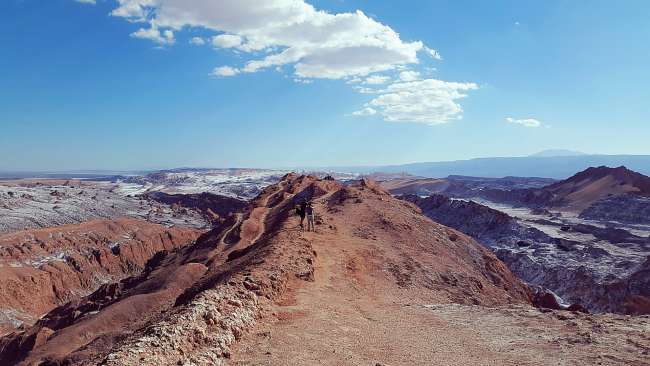
Reiseberichte Chile
